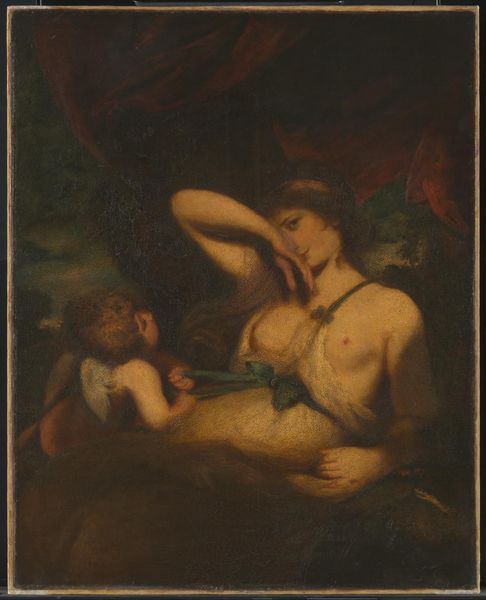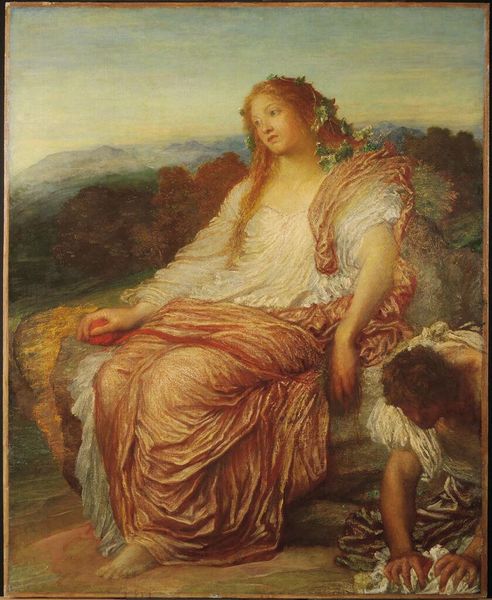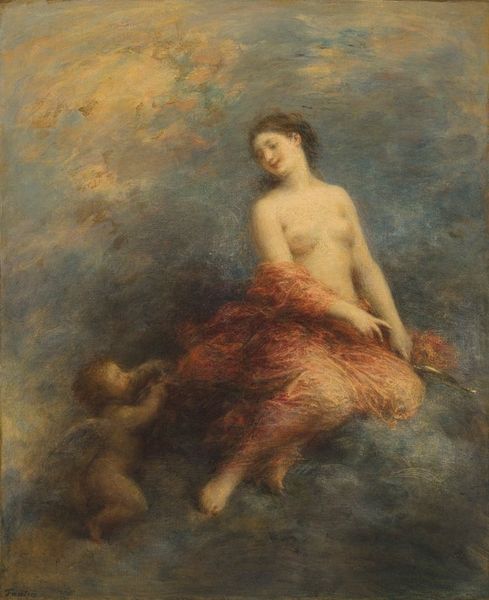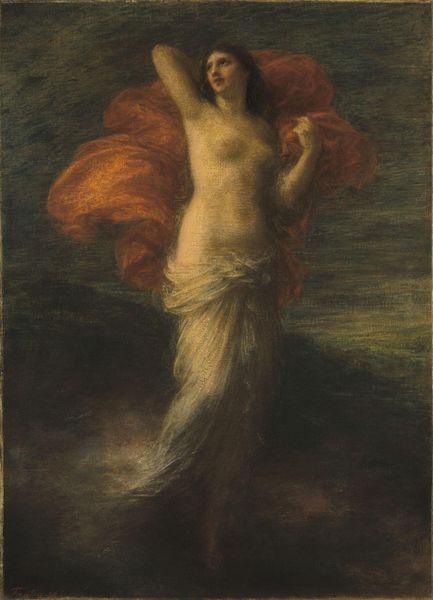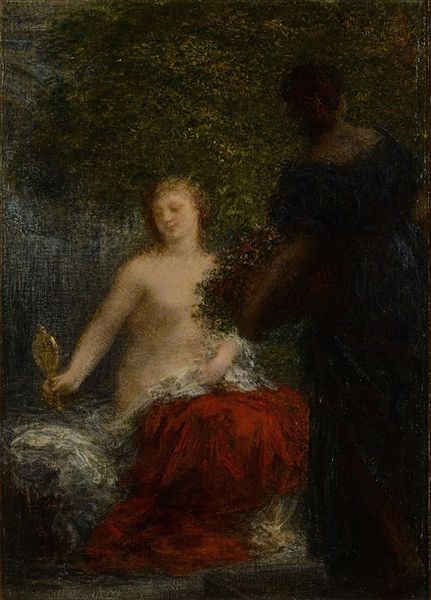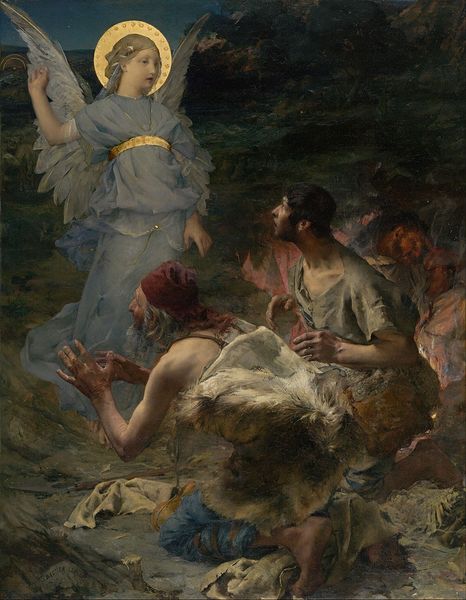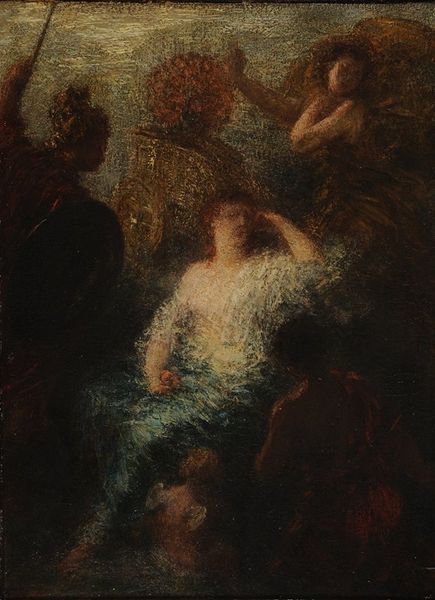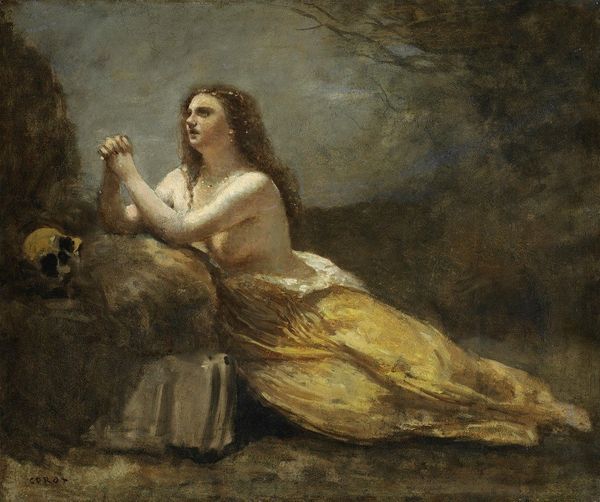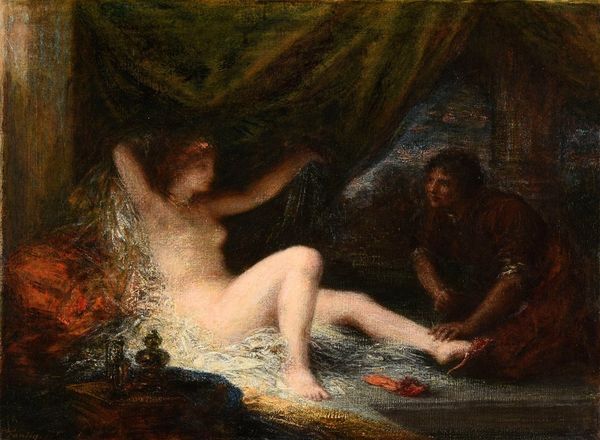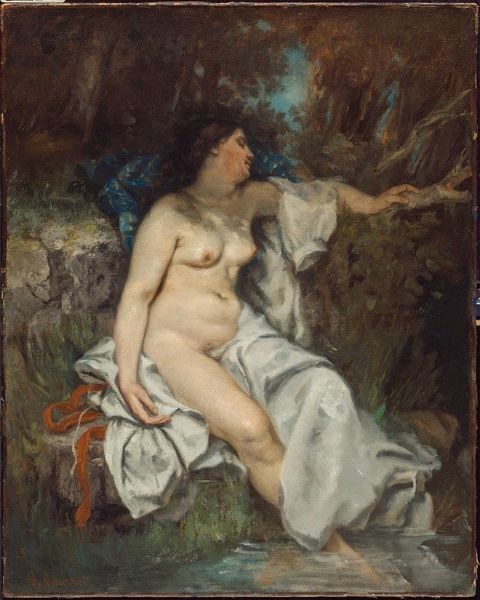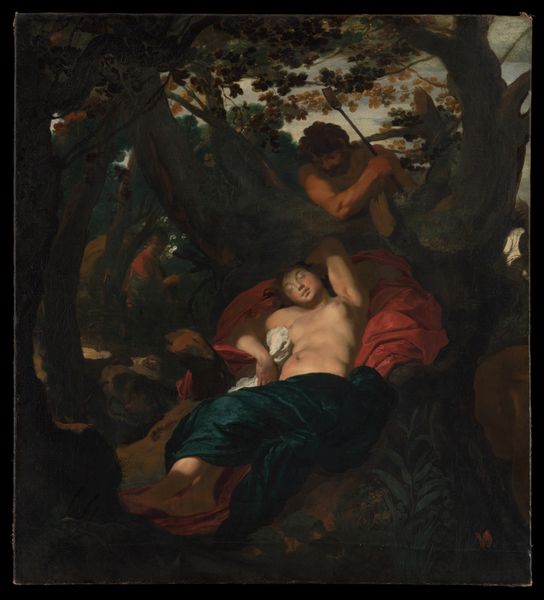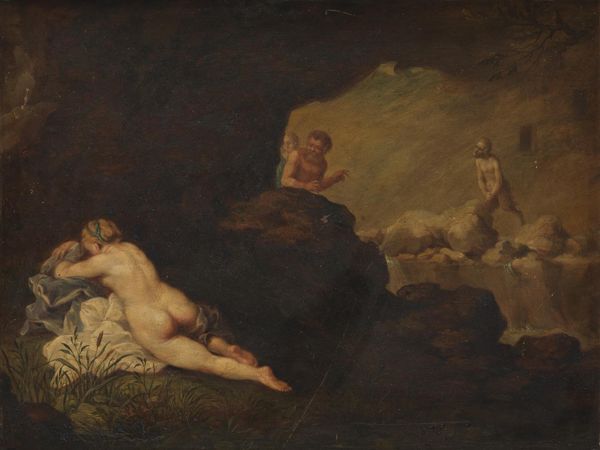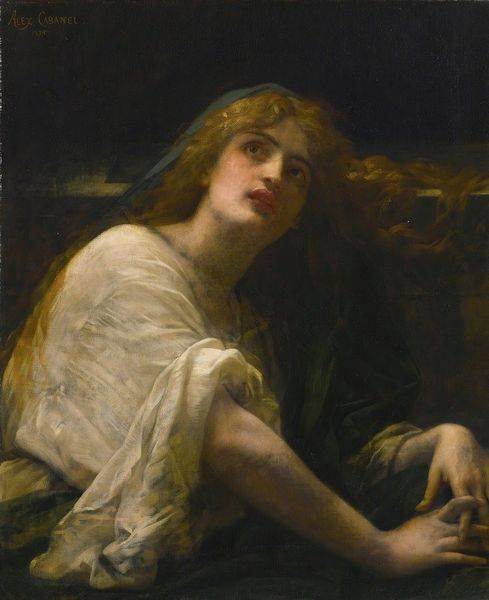
Dimensions: 24 x 20 in. (61 x 50.8 cm)
Copyright: Public Domain
Curator: It has this shimmering, dreamlike quality…a sort of heartbroken grandeur. Editor: It does. Here, we have George Frederic Watts’ “Ariadne,” painted in 1894, now residing at the Metropolitan Museum of Art. Watts often drew from classical mythology, and here, he gives us his rendition of Ariadne’s abandonment by Theseus on the island of Naxos. Curator: The colors are astonishing, really. That sort of apricot orange of her skirt, almost vibrating against the rough grays of the stone… and there’s this little burst of wildflowers to the left. But it's not a conventionally beautiful painting. There’s a rawness, almost like grief made visible. Editor: Exactly. Watts places Ariadne in a complicated context. He emphasizes her vulnerability as a woman scorned, which echoes Victorian-era anxieties about female sexuality and abandonment, positioning her as both a victim and a symbol of resilience. It’s interesting how the seemingly traditional themes are interwoven with progressive questions of the period. Curator: And that slumped figure at her feet? He looks utterly depleted, lost. A visual representation of, well, what it feels like to be utterly gutted. Maybe it’s a subtle reference to the grief that becomes of the male species through time. Watts clearly invites empathy, even if it’s laced with that characteristic romantic melancholy. Editor: True. Consider the historical backdrop too. Watts created this work during a period of intense societal shifts in Britain. He challenges Victorian society’s prescriptive ideals around gender. By showing us a figure filled with profound pain but not devoid of agency, Watts subtly critiques the patriarchal expectations of his era. Curator: It feels remarkably modern for its time, almost theatrical. All that landscape fading into a smoky dream behind her. Almost like Ariadne herself is inventing a whole new emotional landscape from the rubble of the old one. It’s profoundly touching. Editor: Definitely. Watts, through this canvas, sparks an eternal dialogue about love, loss, and agency that resonates powerfully with current feminist discourses and contemporary debates about identity. It’s why “Ariadne” remains such a compelling, important artwork today.
Comments
No comments
Be the first to comment and join the conversation on the ultimate creative platform.
